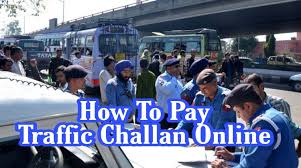Union Finance Minister Nirmala Sitharaman made in her first federal budget, the one which got maximum attention was 'One Nation, One Grid'. Sitharaman said this move will ensure states get affordable power and added that
power sector needs much-needed reforms.
power sector needs much-needed reforms.
What is 'One Nation, One Grid' work and how does it work?
Though 'One Nation One Grid' has emerged as a trending search after Sitharaman mentioned it in her speech, the idea was conceptualized in the 90s.
Now, India's power system is divided into five regional grids with each grid catering to electricity demands of one particular region.
To make 'One Nation One Grid' a reality, all these grids have to be integrated.
Initially, grids were integrated to allow exchange of power
Notably, grid management on regional basis started in the 60s.
Subsequently, the state grids were connected to give birth to five regional grids namely Northern, Eastern, Western, North Eastern, and Southern region.
The process of integrating grids began with asynchronous HVDC back-to-back inter-regional links. The grids were linked with one another to ensure surplus power is exchanged between regions.
Inter-regional transmission capacity is expected to cross 1L MW :-
Subsequently, when the focus of this exercise moved from regional self-sufficiency to a national basis, the inter-regional links were planned with power generation projects.
It's important to note that beneficiaries of these projects weren't bound by regions.
By the end of the 12th plan, inter-regional transmission capacity reached 75,050 MW.
This capacity is expected to touch 1,18,050 MW by the time the 13th plan ends.
North Eastern and Eastern grids were connected in 1991
Interestingly, North Eastern and Eastern grids were connected in 1991. The Western Region was connected with this integrated grid in 2003.
In August 2006, North and East grids were integrated. With this, four regional grids namely Northern, Eastern, Western and North Eastern, formed a central grid and began operating at one frequency.
The Southern grid was connected with the Central grid in December 2013.
Why is 'One Nation One Grid' an important step? :-
The most important benefit of synchronizing all regional grids is that it reduces pressure on already scarce natural resources, by transferring power from resource-centric regions to load-centric regions.
It will also facilitate power trading across regions, thus, establishing a vibrant electricity market.
Further, once 'One Nation One Grid' becomes a reality, there will be only one power frequency across the nation.












